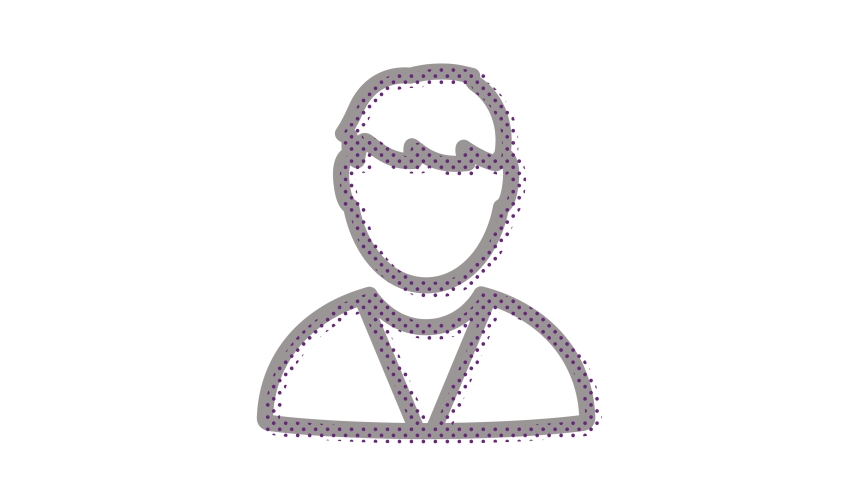Toxic masculinity – Teaching boys to break free from stereotypes

Looking for ways to guide boys towards healthier attitudes? Check out this advice on fostering open dialogues and un-teaching gender stereotypes…

- by Teachwire
- Classroom expertise and free resources for teachers

Get tips on using conversation to break down gender stereotypes and help boys escape toxic masculinity with this advice from two experts…
Why talking and listening can keep teens out of the manosphere

If we want to address the harms wrought by misogyny and toxic masculinity, we need to fully involve men and boys in the conversation, says Natasha Devon…
For a couple of weeks in spring 2024, one question dominated social media discourse – ‘If you were a lone woman or girl in a forest, would you rather encounter a man or a bear?’
In a surprise to literally no women, six out of seven of us said ‘bear’. The rationales varied, however. For some, the bear’s behaviour would be predictable. This meant there would be actions they could theoretically take to avoid being attacked.
If a man was intent on attacking them, nothing they could do would stop him. Others felt the bear wouldn’t enjoy attacking them.
At any rate, the bear wouldn’t pretend to befriend them first. People would also believe a woman if they said that a bear had attacked them. No one would have to watch the bear’s apology video afterwards, in which he claims to have turned to religion for salvation and declares that only God can judge him.
A framework for feelings
Many men saw the logic in these arguments. They understood that no one was saying they were definitely a predator. Similarly, when I visit Europe and see a negative response when people realise I’m English, I don’t instantly assume they think I voted for Brexit.
Some men, however, were outraged. How dare women imply they’re more dangerous than a bear? “Misandry!” they bellowed (even long after the rest of us had moved on to the next hot button social media trend).
The problem is, for those men who perceived these discussions as personal attacks, there are plenty of internet silos now waiting to scoop them up. Podcasts, TikTok accounts and books predominantly produced by wealthy white men claiming they’re now the most oppressed people on Earth thanks to feminism have become a multi-million-dollar industry. And alongside the validations of hurt, their audiences will be ‘treated’ to advice on how to subjugate women and girls.
It’s little surprise that teenage boys are particularly susceptible to all this. Many of us will remember adolescence as a time when we felt we’d burst with the injustice of it all. Figures like Andrew Tate give young men a framework within which to fit these feelings.
As the women and girls who have been disrespected, harassed or assaulted by the male adherents of this movement will attest, we can’t simply assume that they’ll grow out of it.
We must find a way of talking to these boys and men about women’s safety that engages them, or else lose them to the so-called manosphere.
This is an online subculture in which boys as young as 12 are inducted and radicalised into misogynistic, homophobic and racist ideologies.
Basic decency vs toxic masculinity
There are, however, some effective ways of getting young men enthusiastic about gender equality – the first of which is to ask them what they think, and then listen without contradicting them.
Often, simply asking ‘Why do you think that?’ or ‘What evidence do you see for that?’ can prompt them to arrive at a different, more productive conclusion.
We can acknowledge those people that they like and then present them with alternative role models.
If they follow misogynistic influencers, then rather than jumping to condemn, ask what it is specifically that they admire about them.
Then show them examples of other prominent men online who share the same or similar qualities, but without the side order of toxic masculinity. I’ve listed a few examples below. Above all, make them feel like part of the solution – not the problem.
The truth is that we need good men to help us fight sexism; men who will call out their mates’ ‘banter’, intervene when they see misogynistic bullying online or in real life, and who can demonstrate that it’s okay for men to talk about their feelings in a healthy way. By, well, doing just that.
Whilst I understand the arguments that we shouldn’t praise men and boys for simply showing basic decency, I would tentatively disagree. In a world where it’s so easy for them not to behave decently, they should be.
Positive online male role models
- @theyoungimam – Talks to young Muslim men about the importance of respecting women (NB – Andrew Tate claims to have converted to Islam)
- @michaelulloapt – Male body positivity and fitness, without the toxicity
- @TheOneArmedWonder – A former soldier turned disability activist and model
Natasha Devon is a writer, broadcaster and campaigner on issues relating to education and mental health; to find out more, visit natashadevon.com.
Un-teaching gender stereotypes for boys
Small changes to your practice could make a big difference to your pupils, explains Dr Finn Mackay…
Today there are still articles doing the rounds about how to teach boys, or what helps in getting boys to read earlier, or whether boys’ hands really do naturally hurt when holding a pen for too long.
I propose that it is time to take off our superhero capes and lay down our gun-shaped sticks! Boys are not from Mars and girls are not from Venus; our children are human beings, with equal capacity for loving and caring and equal need for loving and caring.
Of course there are important pedagogical insights when it comes to teaching boys, as with girls. But this is not because of genetic differences in boys. It is because of what society has done to them.
Children learn the expectations and restrictions of gender early on. This means they scrutinise and police their own behaviour and the behaviour of others. They police their styles, clothes, manner, speech and expression.
Young children copy and learn that there are certain, sex-specific ways that they should sit, walk, eat and have their hair. They learn that there are certain, sex-specific clothes, colours, games, toys, books, sports and hobbies which are out of bounds.
Does this sound like abstract gender theory 101? Does it sound like Feminist hysteria? Perhaps it does. But I’m not talking about making everyone the same, or brainwashing children.
(The irony is, of course, that by pointing out the very real brainwashing of children into pink and blue boxes, the messenger becomes accused of the very same).
Reflect on your journey
When thinking about the journey children navigate as they create, shape and discover their identity, it is useful to reflect upon your own.
Cast your mind back and see if you can remember when you first realised that:
- men are meant to have short hair
- women’s faces aren’t acceptable without make-up but men’s are
- boys aren’t supposed to like pink, or cry too much.
Look at your own baby photos; what colour of clothing did your parents dress you in? Did you have vehicles, spaceships or fierce animals on your babygrows? Or did you have pastel shades of pink, hearts or fluffy bunnies?
Not-so-subtle messages
All of this matters. All of these subtle and not-so-subtle messages are how we teach masculinity and femininity to children.
It is important to remember that there is no biological reason why boys should not play with dolls or wear dresses. There is no biological reason for boys to like cars or diggers. There is no biological reason for boys to like guns.
In contrast, there is a biological reason for boys to cry. We call it human expression and development.
I have spoken to parents who say their sons just have a natural interest in cars and wheeled transport, as if this was developed in the womb. Never mind that if you pop into most baby and kids stores you will see that boy’s clothing is covered in vehicles and machines.
“All of these subtle and not-so-subtle messages are how we teach masculinity and femininity to children”
It must surely do something to a child’s familiarity with cars and diggers if they grow up with pictures of them on their sleeves, jumpers, sleepsuits and socks.
Just as it must surely do something to a child’s physical development and sense of their body if they can get on a swing or climbing frame without their dress flying in their face or adults telling them off because their underwear is showing.
Meanwhile, years later, tireless and tired educators are trying to get more girls into engineering, construction or sports and bemoaning the difficulties in changing these statistics. Perhaps this is because we are already starting too late?
A lack of awareness and lack of any critique of narrow gender roles is holding us all back; in fact, it is harming all of society and perhaps our whole future.
What is toxic masculinity?
It’s not healthy to teach our boys that they:
- are naturally violent and militaristic
- are not programmed to care for babies
- always have to be in the lead and be seen to be on top at any cost
These criteria actually form part of the definition of what we call ‘toxic masculinity’. This is an expression of manhood which depends on being:
- tough
- unemotional
- strong physically or financially
- powerful at work, in the home, on the pitch, or in the streets
Toxic masculinity means putting down women and femininity in order to raise yourself up. Therefore it’s inherently sexist and homophobic.
There has been a bit of a revival in academic research into masculinity, or rather, masculinities plural, as there are so many different versions of it.
Social construction
Masculinity looks different in different cultures, religious faiths, countries and time periods throughout history.
This is another reason why we consider masculinity, like femininity, a social construction. This is rather than a product of nature or biology.
Several high-profile masculinities scholars are behind new publications and initiatives, such as Michael Kimmell. His book Angry White Men has been reissued with a new introduction on Donald Trump.
Eric Anderson is a professor promoting a more-positive outlook, with theories and research on inclusive masculinity and declining homophobia.
Tony Porter has numerous TED Talks on the brutalising initiation process into manhood. There are important insights on gender from other academics like John Stoltenberg, Byron Hurt and Michael Flood, to name a few.
Here in the UK we have pioneering activist organisations working with boys and young men for social justice, such as White Ribbon Campaign UK.
Duke University in North Carolina is running courses on toxic masculinity; Stony Brook University in New York has been running a Centre for the Study of Men and Masculinities since 2013. Recently, Oxford University announced it will be running summer schools especially for white, working-class boys.
It is currently estimated that less than 24% of white, British boys from working-class backgrounds leave school with five GSCEs at grade C or above.
Meanwhile of course, it has to be said, and said again, that boys being excluded and left behind in our schools is not new. Arguably we paid less attention for all those years that black boys were most affected.
(In fact, a group photo of 14 black male students at Cambridge University went viral online. Together they were the only black male students in the whole 2015 student intake.)
Oppression and discrimination
While men as a group are still very much in power globally, dominating all mainstream institutions of power, this does not mean that every individual man will feel powerful, probably far from it.
Men too face oppression and discrimination against their race, sexuality, social class or disabilities for example. Men are more affected by suicide than women, making up over 75% of those statistics.
In fact, suicide is the biggest killer of men under 45 years of age in the UK. Childline launched a campaign called ‘Tough To Talk’ to encourage boys to seek help with depression and suicidal thoughts.
Men are three times more likely than women to be alcohol dependent. They are more likely to use, and to die from, illegal drugs. We’re more likely to exclude boys from school than girls. Far more men languish in our prisons and men face a higher risk of violence than women.
Importantly, there is clearly something going on here with the link between toxic masculinity and violence. It’s a link that is often unsaid, perhaps because we see it as so normal, and almost expected.
Role modelling
Those are precisely the sort of gendered links, couplings and assumptions that we need to be interrogating and reflecting on, including in our classrooms, from as early as possible. This means:
- role modelling good gender relations
- watching our language
- avoiding sexist assumptions
- speaking out against sexist everyday phrases used by adults and young people alike, such as ‘man up’ or ‘grow a pair’
- ensuring that pupils know that no hobbies or interests or toys are off limits to them simply because of their sex
I personally would take this further and suggest that certain toys and clothing shouldn’t have any place in school at all. This includes toy guns and other militaristic toys or camouflage clothing/uniforms in dressing-up games.
Drop in the ocean
Of course, any of that might feel like a drop in the ocean compared to what children are exposed to in daily life outside school, at home and at the homes of their friends; but many drops can also form an ocean.
It is important to remember that childreen see and understand school as an authority. They may well give more weight and credibility to messages they receive there. This is because they come via a socially recognised formal institution.
“There is clearly something going on here with the link between toxic masculinity and violence”
This brings even more responsibility to every lesson, extra-curricular activity, book in the library, throwaway comment or joke.
I know that teachers and school staff are already under too much pressure. There’s a trend of putting all responsibilities for societal stability onto teachers, when children are socialised firstly in the family and of course by the whole of society.
I know that professionals in school are already blamed for gun crime, knife crime, teenage conception rates, sexual abuse statistics, domestic violence in the home as well as skills shortages and GDP.
I know that Ofsted and the Daily Mail are already peering over your shoulders while you try to do what you are passionate about doing, in a climate of ideological and inexcusable cutbacks.
Less is more
I am therefore not suggesting that teachers should be even more pressured. And I know that something like gender relations and gender identity expression might seem like the least of your worries.
What I am saying is that small changes could make a big difference, to your working environment and to the learning environment of your pupils and students. It is not a matter of doing more in this instance, it is in fact a call to do less – less gendering.
“I know that Ofsted and the Daily Mail are already peering over your shoulder”
All of us should take a moment to imagine who we might be and what we might be doing if we hadn’t been restricted by stereotypes of all sorts. If we didn’t have to battle against unmerited expectations that were set in stone for us the day we were born.
The truth is that boys will not be boys; they will be adult men. They will be friends, fathers, carers, husbands, partners, lovers and colleagues.
We owe it to them to support them to be all of these people fully, free of gender conditioning and gender conditions.
Aggression, emotional suppression, isolation and shame are all key parts of what we understand as toxic masculinity. They are not inevitable, they are learned; they can also be unlearned, and they can be un-taught.
Dr Finn Mackay is senior lecturer of sociology at University of the West of England. He specialises in contemporary British feminism and activism, feminist theory, male violence against women and women’s liberation. Find him at drfinnmackay.co.uk and on X at @finn_mackay. Download our sexism in schools toxic masculinity KS2 assembly.







